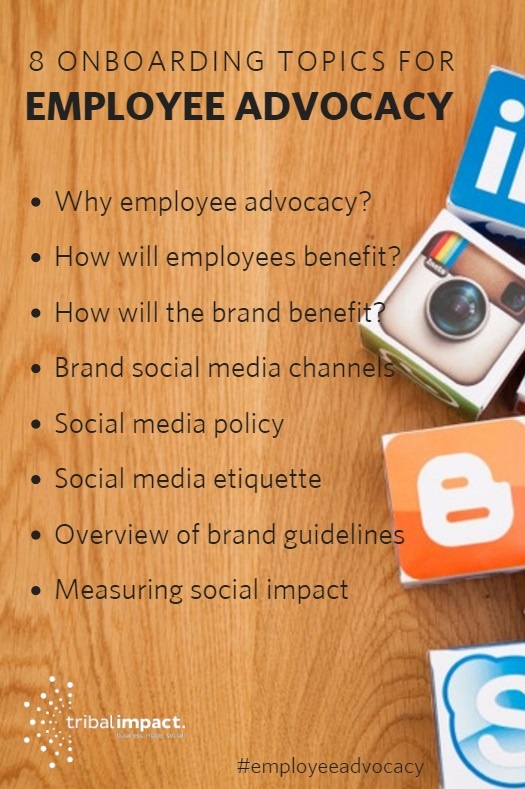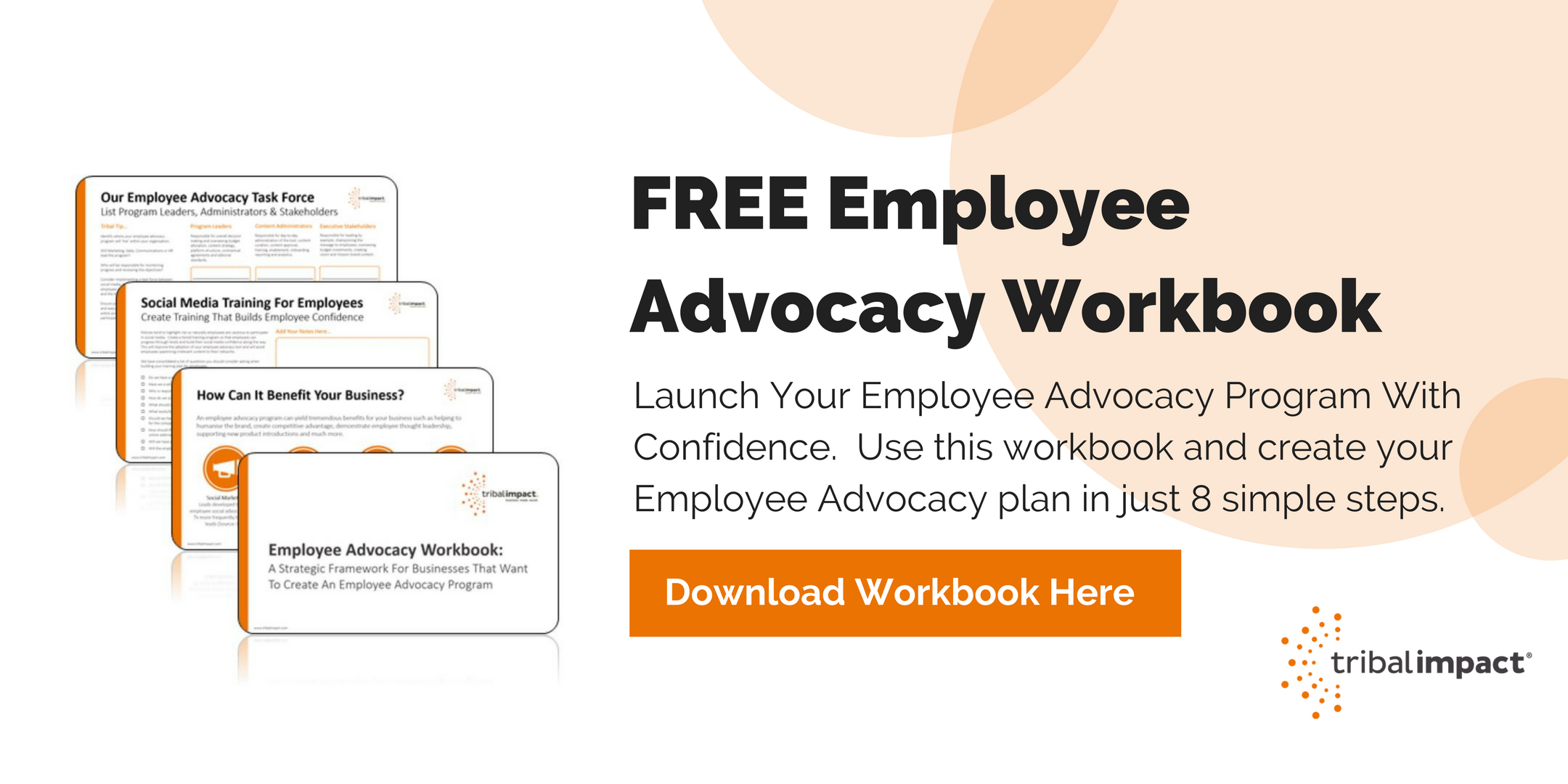You’ve decided employee advocacy is right for your business, you’ve chosen your tool and you’ve identified a pilot group of employees. You’re ready to launch but what guidance should you give your employees before they sign up and start sharing?
Whilst the ultimate goal of employee advocacy may be to generate sales or support marketing initiatives, that needs to become a desired by-product of the program and not the driving objective. Onboarding employees should focus around the value the program will bring to the employee and not just to the business.

As a sneak preview to the webinar, I’m listing the 8 topics I believe need to be addressed as part of an employee advocacy onboarding program.
Overview of why the company is launching anemployee advocacy program
This is primarily about setting the scene for employees. Explain how employee advocacy will support the wider business strategy. How does it relate to business objectives around digital transformation or improved customer experience? Does it link to HR initiatives around improving employee engagement? Tell employees what the high level driving motivation is behind the program.
How employee advocacy will support the professional brand of employees
Explain how employee advocacy is beneficial for the employee. Talk about the importance of shifting their LinkedIn profile away from being resume focused towards reputation focused. Discuss how reading and sharing relevant content on a regular basis can help strengthen their professional brand and set them apart from peers in their industry.
Why the company encourages employee brand advocacy
Now explain how employee success reflects well for the company brand. It’s important to outline the benefit employee advocacy brings to the overall business. Since some employees may be sceptical as to why they’re being encouraged to become more social. Be open and transparent about the business benefits and goals of the program.
Introduction to the brand’s social media channels
This is a great opportunity to introduce employees to the company social media channels and explain a little more behind the purpose of managing those communities. You can pull out examples where customers have used social channels to interact with the brand (positively or negatively) to illustrate the social nature of doing business today.
Overview of your company’s social media policy
It’s important that employees understand the expectation the company has around employee use of social media as it relates to their role in the company. Provide clear guidelines around identifying themselves and their role at the company. Also outline what shouldn’t be shared including confidential documents, internal information or new business wins. If possible, get some examples and ask employees to vote on the correct answer.
Etiquette guidelines for joining in social media conversations
This is less about company rules and more about social media guidance. Give your employees some tips on how to get the best out of participating in conversations on social media. How should they react to posts that speak negatively of the brand. You can show what content works best on LinkedIn versus Twitter and general information about how to conduct themselves in a professional manner.
A short overview of company brand guidelines
Employees don’t typically need to understand brand guidelines. However, when it comes to participating on social media it’s a good idea to address how to reference their employer. It is best practice to provide guidance on trademarked or registered names and official hashtags being used. Perhaps give them some official description of the company for their LinkedIn profile.
How employees can measure their social media impact
Introduce employees to the content sharing tool and explain how to use it. Show them how they can measure the impact they’re having and what is good progress. Talk about post to engagement ratios and explain quantity of posts doesn’t necessarily equate to quality of engagements. This is the time to remind employees to be relevant and selective with what they share.
Onboarding your employees into an advocacy program will take a little time to establish. On the other hand, what will work for one organisation may not work for another. How you deliver the training, who delivers the training, how often to on-board employees, what feedback mechanisms will you have in place. However, this can all change from one business to another.


